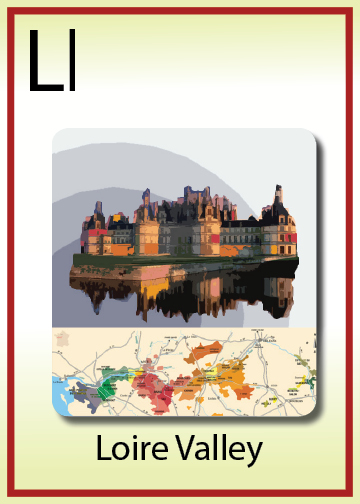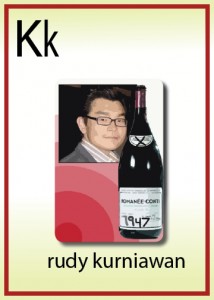Now I Know My Wine-Phabet: L is for Loire Valley
In this new series called “Now I know my Wine-phabet”, I will explore letter by letter wine and what I believe are some of the most important and/or influential aspects in the world of wine. Since I am only choosing one topic per letter, many will be missed. Hopefully these posts come across as being whimsical and informative.
There is one place in the world that has something for everyone, the Loire Valley. The region is formed by the Loire river which runs from east to west. All along the way it is lined with some of the grandest castles. The river deposits that are left behind create each regions specific soil identity, however they share a limestone base.
Something for everyone I said. If you are a wine connoisseur or a history buff, the Loire Valley has it all. Let’s board our yacht and start our journey. We will head up the river to its source, the mountains around Cévennes.
The journey begins with an oyster bar the crew so graciously shucked for us. The timing couldn’t be better, we have entered the Loire Valley and the first sub-appellation, Nantes. Here we find the light, crisp salty wines of Muscadet Sevre Maine. These whites made with Melon de Bourgogne are a must with our oysters.
As our journey continues, we come across an eccentric man, Nicolas Joly in the commune of Savennières. His wines are made of Chenin Blanc on schist soils. We do not drink these wines, these whites are meant for aging and we decide that these wines are more suitable for our cellars.
As we look across the river, we start to smell aromas of apricot & honey. We are now in Anjou where some of the world’s greatest dessert wines are produced. We start with a Cote du Layon, and work up to the Quarts de Charme and finish with the Grand Cru vineyards of Bonnezeaux.
By this time we begin to thirst for red wine. The timing couldn’t be better, because we are now in the region of Anjou-Samur. The cool region produces amazing reds made with Cabernet Franc. The reds of Samur-Champigny are aromatic and mouth-watering.
It is just now dawning on us that Cabernet Franc is the master of reds in the Loire Valley. Our next stop is in the village of Chinon, near the Touraine. These reds are food friendly and work amazingly well with the lamb leg the crew had finished grilling. To the North we cross the river only to find a red we can put in our cellars along with our Savennières. It is the long lasting wine of Bourgueil, which is also made from Cabernet Franc.
When we arrive in the town of Tourraine, some of the grandmothers on our yacht are beginning to complain that the wines have been either too dry or too sweet. However, in the village of Vouvray we find a magical balance for the serious wine drinkers and our grandmothers. The wines made of Chenin Blanc appeal to a variety of palates. The Demi-sec is sweet enough, but not too sweet and has vibrant acidity.
The long journey is now coming to an end when we reach the most popular wines of the Loire Valley, Sancerre. The whites are made of Sauvignon Blanc and the reds of Pinot Noir. This is the region New Zealand has tried to emulate. On the other side of the river there is a dense fog engulfing the vineyards of Pouilly-fume. More Sauvignon Blanc! And if you want even more, just to the south are the vineyards of Menetou Salon, also planted to Sauvignon Blanc.
The Loire Valley has something for everyone. It has been influential for many winemakers of the new world and is home to the greatest vineyards in the world. The captain has docked our yacht and says, “Rendez-vous la prochaine fois, Au Revoir”.










